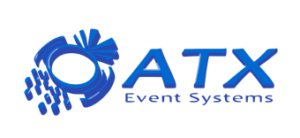Agile Project Management 101
 At a high level, Agile Project Management is a style of project management that focuses on continuous improvement, scope flexibility, team input, and delivering essential quality products. Using scrum as a framework, Agile project management centers on lean thinking to eliminate wasted time and tasks. At its core, the purpose of Agile is to focus on people, communications, the product, and flexibility.
At a high level, Agile Project Management is a style of project management that focuses on continuous improvement, scope flexibility, team input, and delivering essential quality products. Using scrum as a framework, Agile project management centers on lean thinking to eliminate wasted time and tasks. At its core, the purpose of Agile is to focus on people, communications, the product, and flexibility.
Why use Agile?
Agile project management was originally developed for software teams with complex specifications who wanted to move fast, and wanted to deliver high-quality products as a first deliverable. However, teams that want to deliver other types of high quality projects often benefit from using Agile.
If your team is dedicated to creating successful, stand-out events on a continuous basis, then it may be a type of project management for your team to explore.
What are the moving parts of Agile?
Agile project management has seven core stages.
- Stage 1 -the Project Owner identifies the product vision. The product vision is a definition of what your product is, how it will support your company or organization’s strategy, and who will use the product.
- Stage 2 – the Project Owner creates a product roadmap. The product roadmap is a high-level view of the product requirements, with a loose time frame for when you will develop those requirements.
- Stage 3 – the Project Owner creates a release plan. The release plan identifies a high-level timetable for the release of working software. An agile project will have many releases, with the highest-priority features launching first.
- Stage 4 – the product owner, the master, and the development team plan sprints, also called iterations, and start creating the product within those sprints. Sprint planning sessions take place at the start of each sprint, where the scrum team determines what requirements will be in the upcoming iteration.
- Stage 5 – during each sprint, the development team has daily meetings. In the daily meeting, you spend no more than 15 minutes and discuss what you completed yesterday, what you will work on today, and any roadblocks you have.
- Stage 6 – the team holds a sprint review. In the sprint review, at the end of every sprint, you demonstrate the working product created during the sprint to the product stakeholders.
- Stage 7 – the team holds a sprint retrospective. The sprint retrospective is a meeting where the team discusses how the sprint went and plans for improvements in the next sprint.
Who are the team members involved in Agile?
Now that we know what the stages of Agile development process look like, it’s important to understand who the key players are within an organization. While the process itself allows for maximum productivity, quality, and flexibility, it’s the people who make it churn.
- Project Owner- This person is the owner of the particular project or product the tasks are being undertaken for. This person must be able to communicate to both the development team as well as the end customer and stakeholders. They work with the development team to create requirements for a project.
- Development Team – The development team are the people who create the product. Each team member is responsible for a certain number of tasks, estimating them, testing them, and reporting back to the rest of the team and product owner.
- Scrum Master – The Scrum Master plans all of the projects and leads the daily standup Scrum meetings. They are responsible for keeping projects within their specified timelines and identifying areas for improvement. They also lead sprint planning meetings and retrospectives.
- Stakeholders – These are the people outside of the immediate team who have a stake in how the project turns out. This could be managers, department heads, or end customers.
Next Steps
This basic overview of Agile project management should help you gain an understanding of the core concepts, processes, and people involved. If your team is ready to delivery high-quality products on a continuous basis, then it may be time for you to adopt Agile project management.


